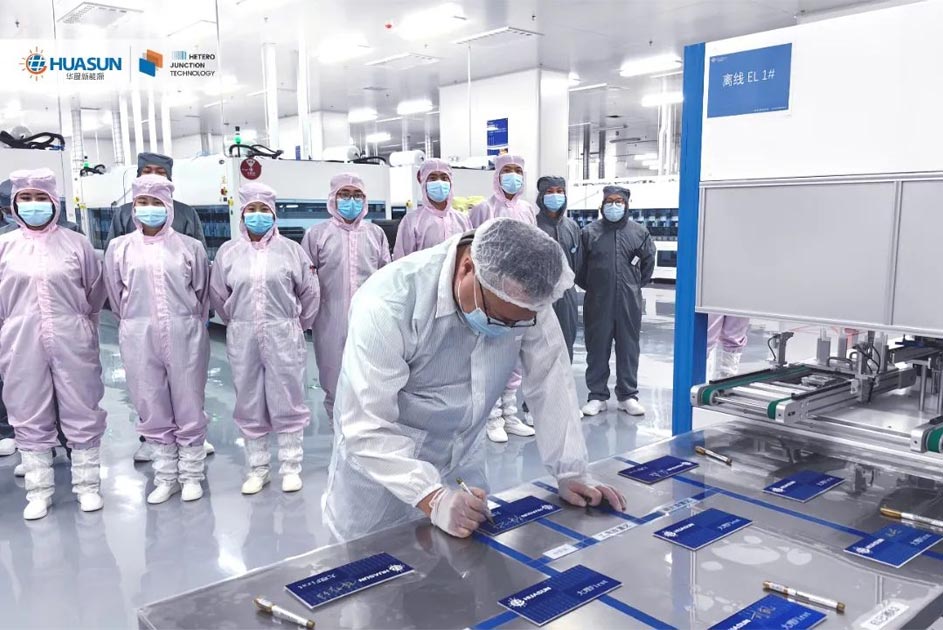Huasun says it has achieved a 25.69% power conversion efficiency in a heterojunction (HJT) solar cell and expects to maintain an average efficiency of 25.5% in mass production. The completion of the Huasun Dali 2.5 GW Phase I HJT Cell Project, along with the successful production of the first batch of 210 mm HJT solar cells, occurred on Sept. 6.
“Thanks to the double-sided micro-crystalline process and silver-copper paste technology, the HJT solar cells can performance exceptionally well even in harsh environments such as high altitude and high ultraviolet rays,” said Huasun.
In March, the China-based heterojunction module manufacturer started making solar panels at its HJT cell factory in Xuancheng, in China's Anhui province. The factory will have an annual capacity of 2.4 GW and will exclusively produce bifacial 182 mm HJT cells, based on a cell tech with a power conversion efficiency of 25.26%. The results have been confirmed by the Institute for Solar Energy Research, in Hamelin, Germany.
This content is protected by copyright and may not be reused. If you want to cooperate with us and would like to reuse some of our content, please contact: editors@pv-magazine.com.



2 comments
By submitting this form you agree to pv magazine using your data for the purposes of publishing your comment.
Your personal data will only be disclosed or otherwise transmitted to third parties for the purposes of spam filtering or if this is necessary for technical maintenance of the website. Any other transfer to third parties will not take place unless this is justified on the basis of applicable data protection regulations or if pv magazine is legally obliged to do so.
You may revoke this consent at any time with effect for the future, in which case your personal data will be deleted immediately. Otherwise, your data will be deleted if pv magazine has processed your request or the purpose of data storage is fulfilled.
Further information on data privacy can be found in our Data Protection Policy.